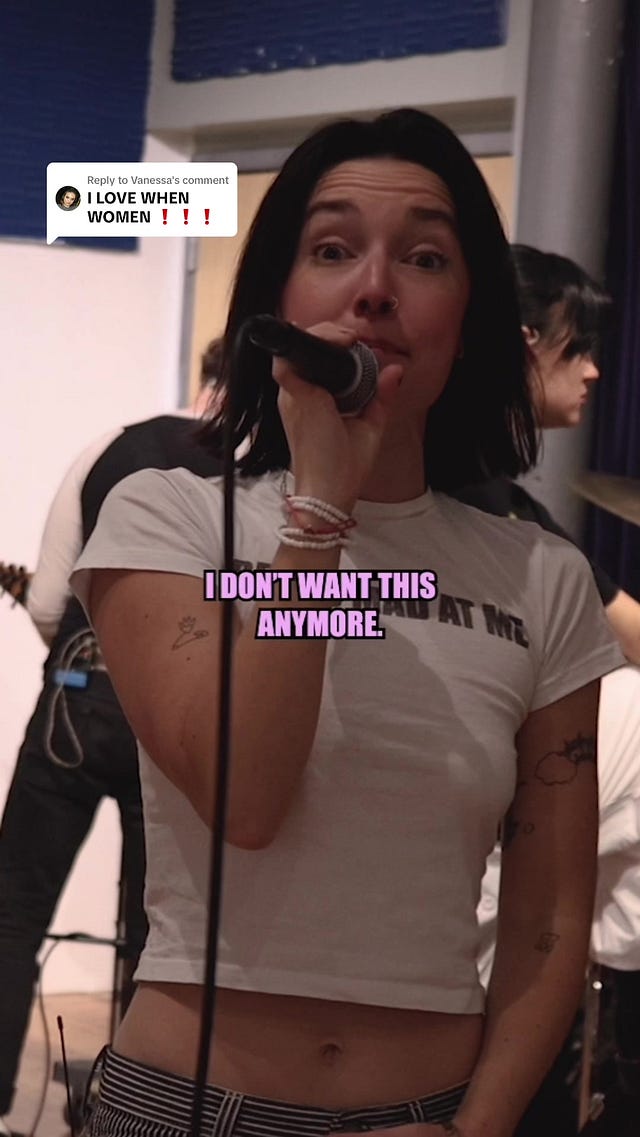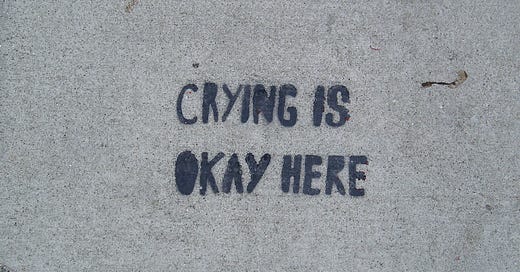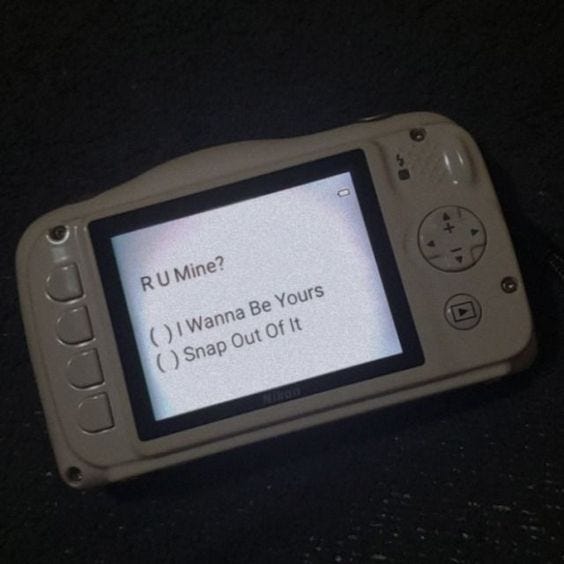"It was never a phase, Mom!” The revival of alternative music is a call for authenticity.
Future and past connect as young generations crave for something they never had.
There was a time when one of the first things we would ask someone we had just met was: What kind of music are you into?
Music is a channel of expression and identity. And just like fashion (as we previously discussed here about clothing and community), music and communities have always walked together, representing one another. And just like fast-paced trends are getting in the way of authenticity in fashion, the music scene is also facing an identity crisis – are we still what we listen to?
We have been witnessing a new wave of nostalgia in music. Musical elements from various genres and decades are making a comeback with one event in particular which deserves special attention: the revival of alternative music.
Of course, I mean special attention for a very nostalgic and personal reason. I remember being 16 and scrolling on Tumblr while listening to La Dispute, Pierce the Veil, Paramore, A Day to Remember, and many others. Today, the 2014s aesthetic and music are being relived - and it made me realise that it has been ten years since!
“I romanticise even the worst of times
When all it took to make me cry was being alive”
Paramore - Crave
It is worth noting that this is not just a revival of the music genre with new music and emerging bands and artists – like boygenius, The Beaches, Djo, and more – it is a revival of artists and bands that coined the era.
It started with My Chemical Romance reunion Tour announcement in 2019, following the release of a new single in 2022.
The same year marked the beginning of a new era: When We Were Young festival brought back what we thought we had lost after the last edition of Vans Warped Tour in 2019. Paramore 6th album, This Is Why, debuted at No. 2 on the Billboard 200 chart in 2023 after a five-year break, following two Grammys for Best Rock Album and Best Alternative Music Performance. Blink-182 and Fall Out Boy are back with new music and touring in different countries. Green Day has also released their 14th studio album this year. I Wanna Be Yours by Arctic Monkeys has been charting on Billboard Global 200 for 82 weeks.
The high demand for bands and festivals can also be observed in various countries, like the I Wanna Be Tour festival in Brazil, featuring iconic Brazilian bands and artists like Fresno, NX Zero, and Pitty and international bands like A Day To Remember, The Used and All Time Low (it hurts a bit remembering that I missed this one).
And there is no way of not mentioning a key aspect behind this: TikTok. MGMT is charting on the app's popular songs rank and Pierce The Veil's single King For a Day is trending with multiple videos with over a million views. Some of these videos are from young artists covering the song, showing a high interest in the scene.

 Tiktok failed to load.
Tiktok failed to load.Enable 3rd party cookies or use another browser
But how is this different from other trends in music? Along with Millennials, Gen Zs are asking for not only a comeback of the music but also a community they never had access to.
Young people are currently facing a shift in values and personal life changes. Forging your identity can be distressing when facing countless meaningless trends that do not resonate entirely with your demands. It is embedded within ourselves the need to express our response to the world we live in, and communities have a part in it. Our values spoke directly to the things we wore, the music we listened to and the groups we were part of.
On the one hand, these groups were very restricted: they often could only be accessed if you checked all the “requirements” needed to be part of it and lived in a specific city or area where this group thrived. On the other hand, it provided us with a space where we could forge and explore our interests and meet like-minded people. We used to ask for a more accessible and flexible world, and thanks to globalisation and social media, we can now transit through different groups but at the cost of losing niche communities. Social media opened a lot of doors for us who wanted to be part of very regional-restricted groups, but TikTok's endless scrolling alongside frantic aesthetic-driven fashion trends had left us missing being part of a group where we could find ourselves at times when we were feeling so different from everyone.
There have been conversations about how monoculture is dead and subcultures are stronger than ever. But from a personal perspective – we might need to dive into it further – it feels quite the opposite. Trends come and go so quickly that there is no time to foster a deep sense of unity between people. If anything, we are consuming the same content we thought was individually curated for us. We are all posers. Should we call this poser-core?
This scenario leads me to understand why the alternative music scene is so appealing. Alternative music is all about representing those who are craving for understanding and do not fit anywhere. It is a community where you can be who you are. This feeling of inadequacy that was restricted to a few now looks like it is the status quo among young generations. This is why the scene is being revived: Young people are looking for songs that capture a wide range of emotions and speak directly to their hearts while offering a space to share their experiences. By resonating with the genre, alternative music allowed us to connect with others who needed the same support and found a community that expanded from the online sphere to physical places like gigs and festivals.
The alternative music scene was an expression of its time and thus had well-defined values. It felt authentic. The revival of the genre says a lot about what these audiences want. It is time for bands, labels and brands to provide them with real-life experiences and meaningful connections. Just like fashion, music does not exist in a vacuum. It is a result of one’s experience in life, so it requires a truthful connection to the genre and what it represents. Otherwise, it will be an evanescence trend.
Thank you for taking the time to read this piece. What kind of bands are you listening to at the moment? Do you have any favourites from your teenage years? Let me know. Talk to you soon!
Sources and special thanks to:
The TikTokification of Emo MusicThe TikTokification of Emo Music by gabi belle
Stuck in 2020, pretending it’s 2014 by Rebecca Jennings
What is subculture? Keio University
What is a Subculture? Grinnell College
The Rise in Alternative Music Explained by Harmonie Diezhandino
Understanding Alternative Music: A Comprehensive Guide
Catarina Sá





